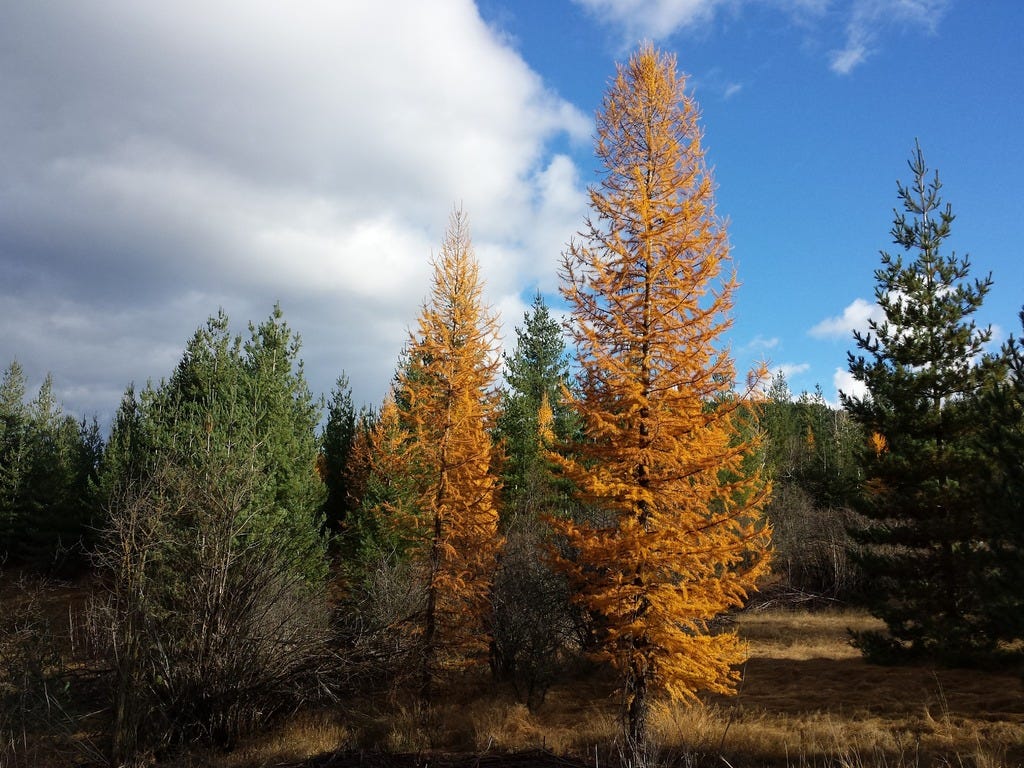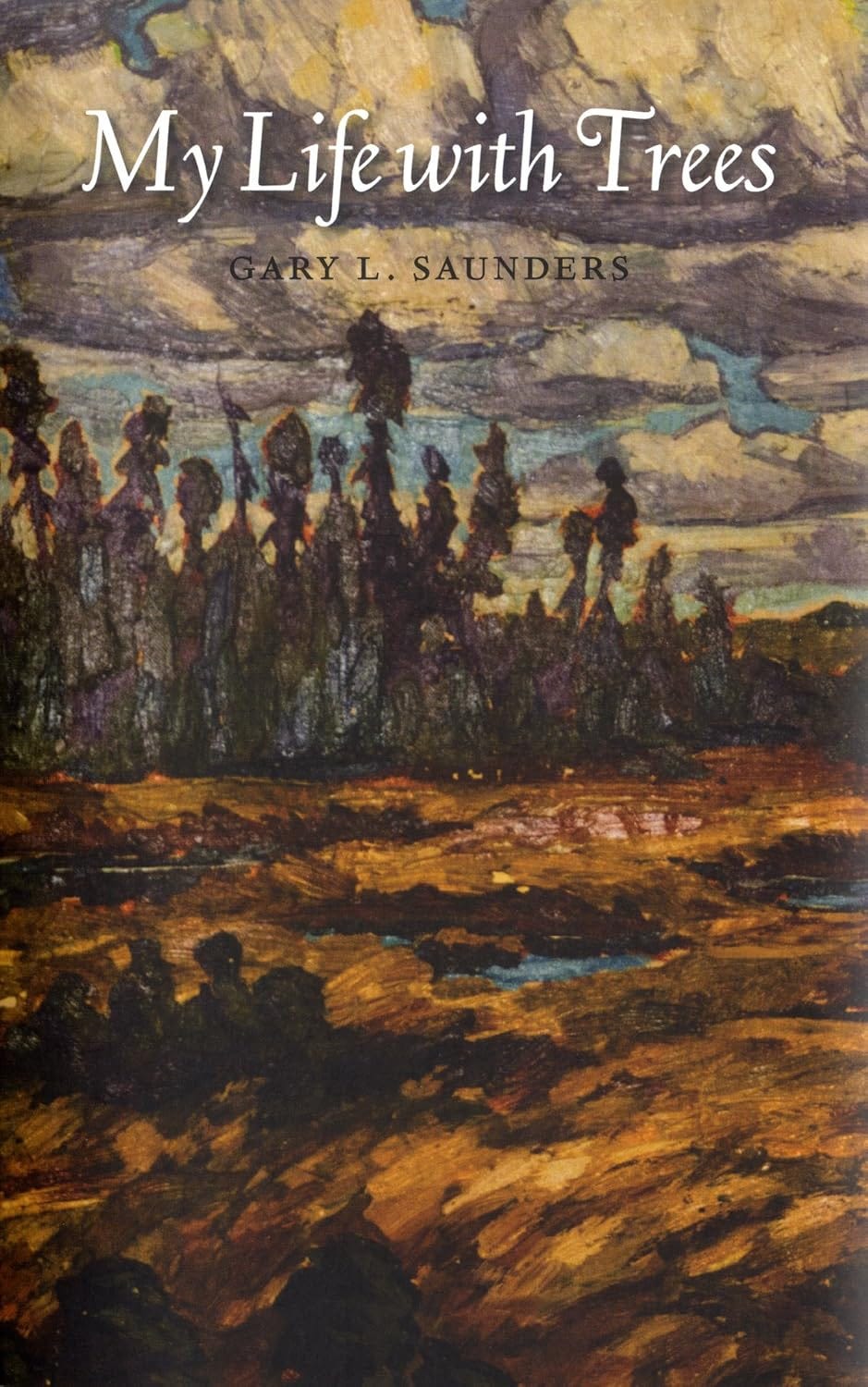My Life with Trees by Gary L. Saunders
Reviewed by Robin McGrath
I recently had reason to drive across Newfoundland and back in the course of three days, and I was struck by the enormous swaths of uninhabited forests, particularly between Clarenville and Deer Lake. It might be a boggy, mosquito-infested nightmare to walk through, but from the window of a car on the Trans Canada Highway, it looked absolutely beautiful and inviting. I was particularly interested to see so many tamaracks bowing over the spruce and fir, as tamaracks were a rare sight when I was a kid, most having been killed off by some mysterious disease.
I first noticed them in the nineteen fifties while accompanying my father on a drive down the west side of St. Mary's Bay. As one of a family of thirteen, I didn't often get solo time with him, but my enjoyment of the trip was enhanced when I noticed tall, green, lacy evergreens towering above the dark spruce, bowing together all in the north-east direction like well-trained ballet dancers. My father explained that they were once common but had almost gone extinct and were only now recovering.

Back in my own rocky harbour, I pulled a copy of Gary Saunders' My Life with Trees from the bookcase to look up what this highly respected forester and artist had to say about tamaracks, and found myself totally caught up in the text. A mixture of memoir and scientific summation, I'd read the book ten years ago, but having spent much of my life above the tree line I was inclined to remember the personal history rather than the natural history.
Tamaracks, which Saunders calls the “never-evergreen”, are only one of two North American conifers to drop its needles each fall. They were apparently almost annihilated by an attack of larch sawfly around 1900.
Saunders gives not just a history of the tamarack's life cycle, but also describes how and why these trees were so essential to our shipbuilding culture here on the East Coast. Because they were strong, oily, and water-resistant, tamarack roots were used by Indigenous people for stitching their canoes together, and the trunks and branches were also ideal for fencing, railroad ties, pit props, wharf and bridge timbers, lobster pot hoops, and a dozen other essential items.
Saunders educates and entertains with his account of more than two dozen tree species, and an added advantage of this book is that it is beautiful. The print is clear, the margins generous, the paper lovely, and, best of all, it has a gorgeous paper wraparound cover, with a reproduction of Bog and Barrens, one of Saunders oil paintings. What's not to love?
About the Author
Originally trained as a forester, Gary L. Saunders went on to study fine arts at Mount Allison University and the Ontario College of Art before taking a position with the Nova Scotia Department of Lands and Forests extension program. Here, he honed his skills as an editor and writer. Saunders has been a frequent contributor to periodicals such as Atlantic Advocate, Rural Delivery, Atlantic Forestry Review and Saltscapes and is the author of numerous books, ranging from guidebooks (Trees of Nova Scotia and At a Glance: A Guide to Identifying and Managing Nova Scotia Hardwoods) to essays (Alder Music and September Christmas) to illustrated children’s books (The Brook and the Woodcutter). He lives in Clifton, Nova Scotia.
About the Reviewer
Robin McGrath was born in Newfoundland. She earned a doctorate from the University of Western Ontario, taught at the University of Alberta, and for 25 years did research in the Canadian Arctic on Inuit Literature and culture before returning home to Newfoundland and Labrador. She now lives in Harbour Main and is a full-time writer. Robin has published 26 books and over 700 articles, reviews, introductions, prefaces, teaching aids, essays, conference proceedings and chapbooks. Her most recent book is Labrador, A Reader's Guide. (2023). She is a columnist for the Northeast Avalon Times and does freelance editing.
Book Details
2015, Gaspereau Press
Autobiography
9781554471515
256 pp





Thanks for this chunk of education. A tree lover for sure but I know little of Tamaracks. Plus isn't that just typical, you check a non-fiction book for reference and then get totally enmeshed in it. I won't get started on the many times that's been my fate.